Extreme pruning for backyard orchard culture - does it work?
eukofios
15 years ago
Featured Answer
Sort by:Oldest
Comments (44)
fruitnut Z7 4500ft SW TX
15 years agoScott F Smith
15 years agoRelated Discussions
Backyard orchard help
Comments (11)Ray, In terms of you time availability I would try to stick with easier care trees. You may get a vast diversity of opinions to your questions, but the following comments are based upon my locale/climate. Fruit trees do best with a weed free strip under the canopy. I use mulch, primarily free wood chips from local tree crews. Trees in direct competition with weeds for nutrients and moisture don't perform as well. This is especially true for smaller trees (Think of how poorly an un-weeded garden performs.) In terms of varieties, there are so many different tastes out there, I think you almost have to try some to determine what you like best. You could just go ahead and start planting trees without investigation, but you'll end up removing a lot of trees in the end (as I have done). More investigation will save you money and time in the long run. For apples, I suggest you try tasting several varieties this fall. There is a place you can purchase boxes of mixed apple varieties that may give you an idea what you like. It's called Applesource. Apples are grown in southern IL, so the growing conditions should be fairly similar to yours. Below is a link. Apples are subject to about 3 major diseases in our area, Fireblight, scab, and rust. Depending on the level of susceptibility of the various cultivars you choose, you may or may not have to spray to control these diseases. It's almost certain you'll have to spray apples to control insects. In terms of a harvest horizon, the soonest you would expect to get apples would be about 4 years (+ or - 1 year). This can vary widely with cultivar. There's about a million different cultivars to choose from. Pears are easier than apples, but take a little longer to bear. Generally pears aren't subject to any disease around here expect fireblight, which can kill them quickly. I would recommend a fireblight resistant cultivar, of which there are many. Pears can sometimes be grown without any spray whatever. Here, codling moth gets about 70% of the mature pears, but we have pretty intense insect pressure, so results could be better in your area. Japanese hybrid plums are fairly easy to grow and bear quickly. European plums taste better in my opinion but take much longer to bear and generally aren't as productive. Peaches are easy to grow and bear the second year. They do require spray. Persimmons and Pawpaws don't require anything but mulching and pruning. Pawpaws have been hard for me to get started and I lost 50% of the ones I planted. In all your picks stick with varieties that perform well in the Midwest. The biggest problem with peaches and plums is cracking and bacterial spot. The biggest problem with apples and pears is fireblight. Generally proven Midwest varieties will have some resistance to these problems. Here is a link that might be useful: Applesource...See MoreSmallest fruit trees/shrubs for backyard orchard culture
Comments (6)Well I'll try and see. What you are saying glib does seem logical but in real life things sometimes work differently. Our soil is sand - and I don't mean sandy, it's just pure sand. In summer it dries almost instantly. So if a tree is far from other trees the soil around it always dries faster. But the soil of trees that are close together always stays moist even when the temp is in triple digits. So trees spaced farther apart are using up more resources like water and fertilizer ( we need to water our plants regularly otherwise they will all die cuz a few days without water and the soil is totally dry and the trees show heat stress, and we need to apply fertilizer more often because it just washes away). We have some shade trees that are planted pretty close together and they are thriving, they have grown over 10 feet in less than 2 years. We have to constantly prune them to keep them in control. I just hope that the fruit trees would show te same behavior....See MoreStarted my Backyard orchard
Comments (14)Hi Mike - we've messaged back and forth before from the Citrus Forum. I'm in zone 7b, Raleigh NC, which often acts more like zone 8. I'm originally from Norman OK. My property also has Eastern Red Cedars around it and all of them show signs of Cedar Apple Rust. I bought disease resistant apples and all but one of them show signs of the disease but it doesn't overwhelm the trees and some years it barely shows up. Same thing for my Quince trees - they show signs of Cedar Quince Rust. So I would plant whatever variety does well in that area and plan on doing a bit of disease management part of the year. It's all worth it when you can pick fresh, ripe apples. The newer cultivars William's Pride and Goldrush have done well for me. Arkansas Black is the one that requires no spraying and shows virtually no disease at all. The first couple of harvests will have wimpy flavor but after a few years they get really tasty. Nothing beats Goldrush for flavor as far as I'm concerned. Keep in mind that a lot of apples bear alternate years so you won't get a huge harvest every year. In my yard, wildlife eventually figured out what I was growing so now I have to bag and spray and build wire barriers AND trap. Good luck. Plant what you can find and just know that you will be replacing a few of them in a few years. Peach trees grow like weeds and can suddenly die for no reason so don't worry about them too much, just keep planting new ones every couple of years....See MoreMy First Backyard Orchard
Comments (13)I must say starting an orchard as a first for growing edibles is bold. I would encourage you to contact your county agrilife extension service and see if they have any information that would help you be successful. Plum, pears, and peaches are commonly grown in your area. I use to live in the Dallas area and do not remember anyone growing apples or cherries. The close space fruit tree growing seems to work best in dry climates like California. I would pay attention to what scottfsmith on this forum writes since he has similar humid conditions like you have. Someone closer to home is Neil Sperry. I think he still has a call in show on one of the Dallas radio stations on Saturday. He talks more about flowers than fruits but is knowledgeable on both. You will need to watch out for fire blight on the apples and pears. Peaches and plums are bad about getting brown rot. This forum has been very interesting for me seeing what everyone is growing and if I have a chance to grow them in southeast Texas. It has saved me money and time by finding out what might be possible and what would be a waste of resources. Just remember, all of us have made mistakes and over time we can be successful growing something....See Morealan haigh
15 years agoeukofios
15 years agofruitnut Z7 4500ft SW TX
15 years agoalan haigh
15 years agoMrClint
15 years agomilehighgirl
15 years agoeukofios
15 years agoedlo
15 years agoolpea
15 years agoMrClint
15 years agoalan haigh
15 years agofruitnut Z7 4500ft SW TX
15 years agoMrClint
15 years agoalan haigh
15 years agoScott F Smith
15 years agogeraldo_linux
15 years agoMrClint
15 years agobrandon7 TN_zone7
15 years agoalan haigh
15 years agoScott F Smith
15 years agoalan haigh
15 years agoeukofios
15 years agoMrClint
15 years agoalan haigh
15 years agoScott F Smith
15 years agoMrClint
15 years agoalan haigh
15 years agoMrClint
15 years agoalan haigh
15 years agojuniorpilot
15 years agoalan haigh
15 years agoScott F Smith
15 years agoalan haigh
15 years agoboizeau
15 years agoboizeau
15 years agogeraldo_linux
15 years agoalan haigh
15 years agoScott F Smith
15 years agoeukofios
15 years agoeukofios
15 years agoScott F Smith
15 years ago
Related Stories

GARDENING AND LANDSCAPINGCitrus 101: Start Your Own Backyard Orchard
This Earth Day Weekend, Add Some Green, Style and Deliciousness to Your Landscape
Full Story
MOST POPULARWhen Does a House Become a Home?
Getting settled can take more than arranging all your stuff. Discover how to make a real connection with where you live
Full Story
GARDENING AND LANDSCAPINGCrazy for Fruit Trees
Whether a single citrus or a mini apple orchard, even the smallest landscape space can bear deliriously delicious fruit
Full Story
EDIBLE GARDENSHow to Grow 10 Favorite Fruit Trees at Home
Plant a mini orchard in fall, winter or early spring to enjoy fresh-off-the-tree fruit the following year
Full Story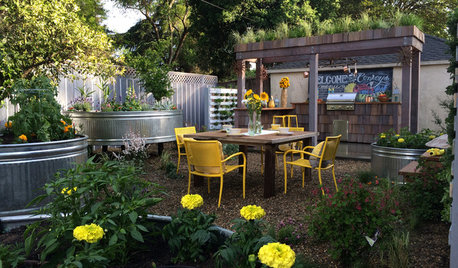
FARM YOUR YARDRemake Your Backyard Into a Mini Farm
You can get a taste of country life by line-drying your laundry, growing some produce or going whole hog with the critters
Full Story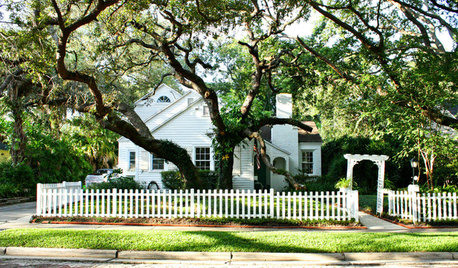
TREESGreat Design Plant: Southern Live Oak Offers an Unbeatable Canopy
Keep it dense or prune it for more light. No matter how you grow Quercus virginiana, it’s a majestic addition to its native landscape
Full Story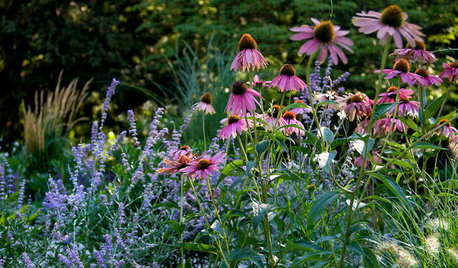
MOST POPULAREnjoy Your Summer Garden — Here’s What to Do in July
Our July gardening guides take the guesswork out of summer watering, pruning and planting. See our tips for your U.S. region
Full Story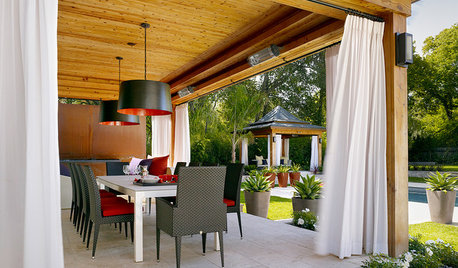
PATIOSGet Backyard Privacy the Subtler, Stylish Way
Why settle for a hulking brick wall when plants, screens and other refined backyard dividers do the job with panache?
Full Story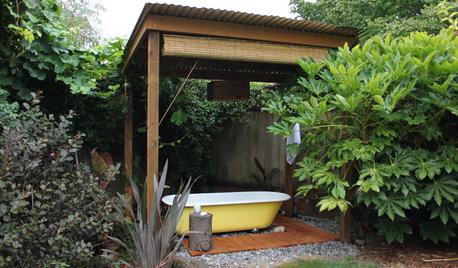
GARDENING AND LANDSCAPINGWhy Is There a Bathtub in the Backyard?
Nope, it's not waiting for bulk trash pickup. These days outdoor tubs are serving soakers, beer drinkers and even the fishes
Full Story
MOST POPULARMy Houzz: Hip Midcentury Style for a Mom's Backyard Cottage
This 1-bedroom suite has everything a Texas mother and grandmother needs — including the best wake-up system money can't buy
Full Story



MrClint